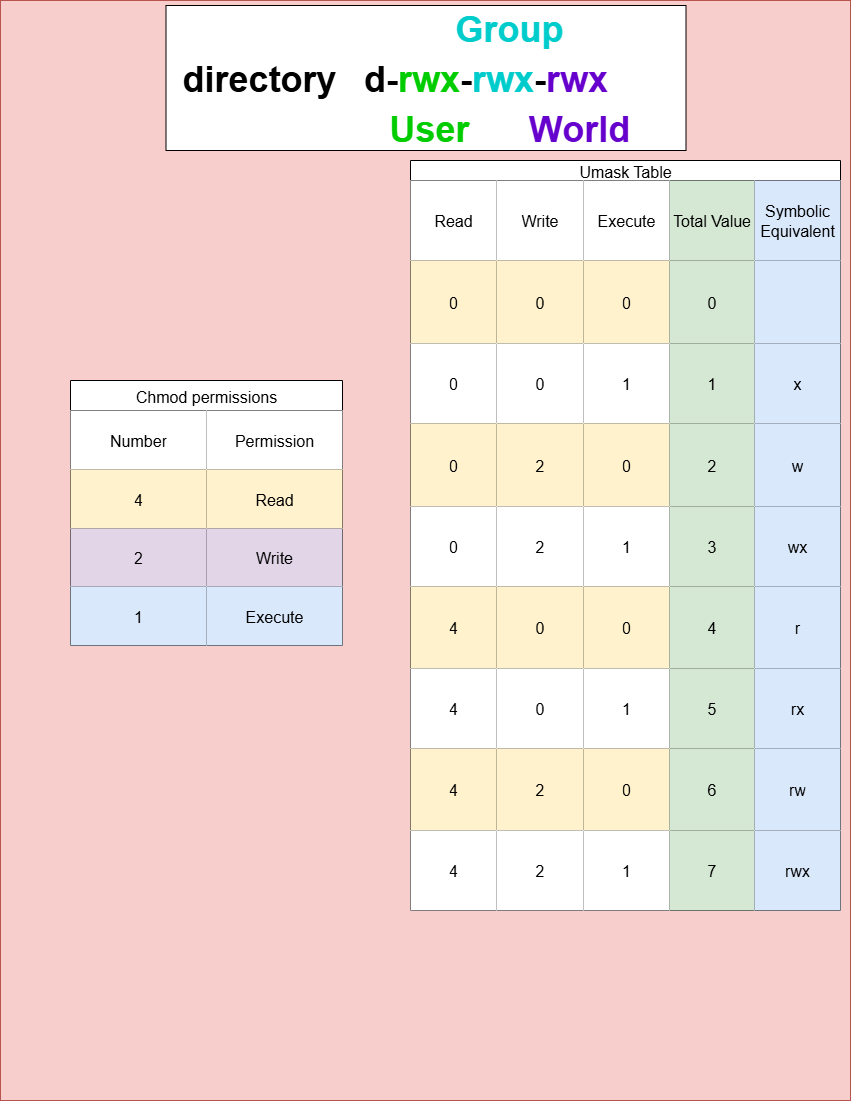Linux Permissions Tutorial 2025
1. File Permissions
Linux files have permissions defining who can read, write, or execute them. Permissions are split into three sets:
- User (owner)
- Group (group members)
- Others (everyone else)
Permissions appear in the format:
-rwxr-xr-x
- The first character indicates file type (
-for file,dfor directory). - Then three sets of
rwxrefer to user, group, and others. r= read,w= write,x= execute,-= no permission.
Instead of typing rwx you can also use numbers based on the table below:
| Number | Permission |
|---|---|
| 4 | Read |
| 2 | Write |
| 1 | Execute |
Example:
2. Chmod Modifying Permissions
Use chmod to add (+), remove (-), or set permissions directly (numeric mode).
-
Add executable permission to the user:
-
Remove executable permission from the group:
-
Set exact permissions with numeric mode (e.g.,
755):- 7 = read+write+execute (4+2+1) for user
- 5 = read+execute (4+1) for group and others
3. Ownership Permissions
Files are owned by a user and a group. To view ownership:
Change ownership with chown:
-
Change owner:
-
Change owner and group:
-
Change group only:
4. Umask
umask controls the default permissions for newly created files or directories by masking out permissions (meaning we are SUBTRACTING permissions). A umask of 0022 removes write permission for group and others by default.
Here is a table on how permissions work. The top table is more traditional for chmod, well the second table is usually what is used with Umask.
| Number | Permission |
|---|---|
| 4 | Read |
| 2 | Write |
| 1 | Execute |
| Read | Write | Execute | Total Value | Symbolic Equivalent: |
|---|---|---|---|---|
| 0 | 0 | 0 | 0 | |
| 0 | 0 | 1 | 1 | x |
| 0 | 2 | 0 | 2 | w |
| 0 | 2 | 1 | 3 | wx |
| 4 | 0 | 0 | 4 | r |
| 4 | 0 | 1 | 5 | rx |
| 4 | 2 | 0 | 6 | rw |
| 4 | 2 | 1 | 7 | rw |
View your current mask:
Set a new mask (temporary for session):
This means new files will have permissions masked accordingly (e.g., 750 for directories).
Set Permanent Umask for One User
Edit the user's shell startup files in their home director
Example if you are logged in as the root user controlling accounts:
these may include:
-
~/.bashrc(For Bash shell, most common) -
~/.profile(For login shells) -
~/.bash_profile(Sometimes preferred in Bash)
Add the following line to the end of one of these files:
After saving, the new umask will apply for all new shells and logins by that user. It affects only newly created files and directories, not existing ones. The change takes effect at the next login or when the terminal is restarted
5. Setuid (Set User ID)
The setuid bit allows users to run an executable with the permissions of the file owner (usually root). It is indicated by s in the user execute permission place.
Example: Check setuid bit on passwd:
Set the setuid bit:
6. Setgid (Set Group ID)
The setgid bit allows users to run an executable with the permissions of the group owner or lets files created in a directory inherit the directory’s group. It appears as s in the group execute position.
Set setgid on a directory:
Files created inside inherit the group ownership of the directory.
7. Process Permissions
Processes run with the permissions of the user who started them. Permissions determine if a process can read/write/execute files or access system resources. To check a process’s user, use:
You can also check process capabilities related to security policies, but generally, processes inherit file permissions from their user identity.
8. The Sticky Bit
When set on a directory, the sticky bit prevents users from deleting or renaming files owned by others within that directory. It appears as a t in the others’ execute bit position.
Example directory with sticky bit:
Set sticky bit on a directory:
This ensures only file owners (or root) can delete or rename files inside.
Checkout this series here
Check out videos in this playlist here
